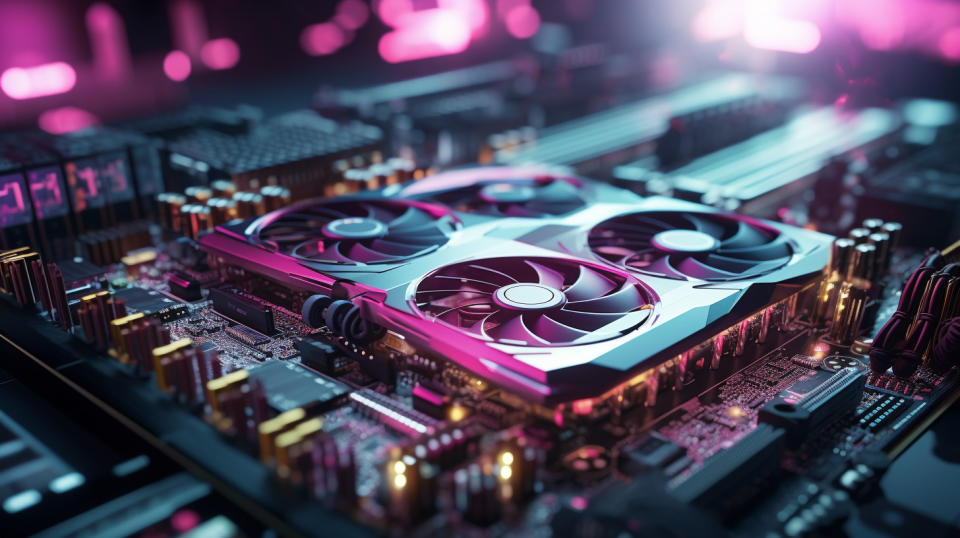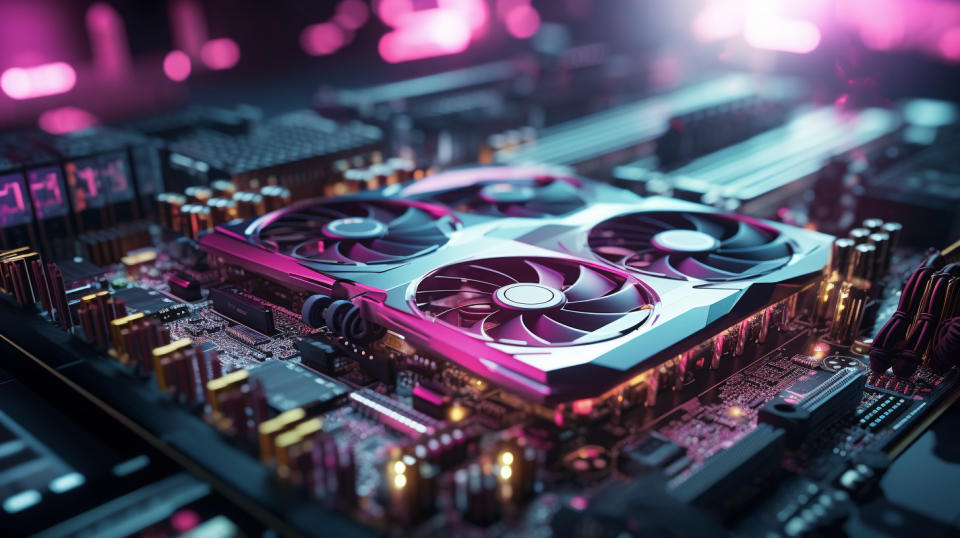We recently compiled a list of 10 Best Stocks To Buy Right Now According To Billionaire Cliff Asness. In this article, we will look at where NVIDIA Corporation (NASDAQ:NVDA) ranks among the 10 best stocks to buy right now according to billionaire Cliff Asness.
The investment approach of Cliff Asness, through his multi-billion dollar hedge fund AQR Capital Management, is quite unique. While some investors such as Warren Buffett and Seth Klarman focus on value, and others like Ken Fisher focus on growth, Asness’ fund tries to quantitatively define what quality is.
While it sounds like a tall order, the hedge fund investor whose latest net worth is estimated to be $2 billion, has written quite a bit on the determinants of a quality stock. One such work came in the form of a research paper published in 2013. In it, Asness and his co authors shared three primary drivers of a quality stock. These are a stock’s profitability, growth, and safety. Within these three factors, profitability is driven by gross profits over assets, return on equity, return on assets, cash flow over assets, gross margin, and the portion of earnings that was cash. A quality stock’s growth is determined by the five year average growth in the per share values of the first five profitability factors, while a stock’s safety is based on its beta, leverage, bankruptcy risk, and return on equity volatility.
Using these metrics, Asness built two portfolios. The first portfolio selected stocks based on the quality metrics, while the latter, called Quality Minus Junk (QMJ) goes long on the quality stocks and shorts the junk stocks. QMJ is more characteristic of AQR Capital’s investment approach. The results showed that without adjusting for risk, the ten sub quality portfolios starting from a quality score of one and ending at ten all had positive excess returns over Treasury bills.
These returns ranged from 28 basis points of excess returns for the lowest quality portfolio to 70 basis points for the highest quality portfolio. The difference in the highest and lowest returns for these portfolios was the sharpest when they were tuned for the Carhart Four Factor Model that adds momentum to the traditional three factor Fama Factor model. The difference was 105 basis points per month for the four factor adjustment.
Looking at the returns for the QMJ portfolio, these jump to 60 basis points for the four factor model for US stocks and 61 basis points per month for the three and four factor models for global equities. When the US and global monthly excess returns are plotted over time for cumulative alpha, they sit at roughly 425% for the US between 1957 and 2016 and at 200% for global stocks between 1986 and 2012.
Shifting gears, as 2023 proved to be beneficial to the stock market because of returns driven by large cap stocks and artificial intelligence, AQR Capital also posted strong results. As per Reuters, the fund’s Absolute Return Strategy delivered 18.5% in returns in 2023, while the AQR Equity Market Neutral Global Value strategy returned a stronger 20.6% in net returns. Before fees, the Absolute Return’s returns were 55%, with the net, or post fee returns sitting at 43.5% in 2022 according to Bloomberg,
AQR’s double digit performance continued during the first quarter. More data sourced by Bloomberg shows that AQR’s Managed Futures Full Volatility Strategy, Delphi Long Short Equity Strategy, and Apex Strategy gained 17.4%, 13%, and 11%, during Q1 2024. Insider Monkey’s data shows that the cumulative value of the hedge fund’s stock holdings filed with the SEC was $58.7 billion by the end of that time period marking a $13.1 billion or 28.7% annual jump. Double digit returns in a quarter are no small matter, and some of the best known hedge funds such as Citadel Wellington, Point72, and Millennium 5.8%, 5.3%, and 3.7% in respective returns during the same time period.
Before we get to our list of Cliff Asness’ top stock picks, it’s also important to see how his firms’ funds have performed so far during the year. September has marked the start of a paradigm shift on Wall Street in the form of the Federal Reserve starting its interest rate cuts in the form of a 50 basis point cut. However, the Fed’s data seems to have disappointed investors as it indicates that as of mid September, it expects the rate to sit at 3.25% – 3.50% by 2025 end.
When looking at the returns of AQR’s different funds year to date, it appears that momentum is one of the top plays as of now. This is because the AQR Large Cap Momentum Style Fund has delivered 21.70% in year to date returns which is roughly three percentage points higher than the benchmark index’s 18.64% in returns. On the flip side, the AQR Large Cap Defensive Style Fund has delivered 16.11% in year to date returns which are 2.53 percentage points lower than the benchmark’s returns. Judging by this, the momentum fund which touts to invest in stocks “considered to have positive momentum if it has performed well in the prior 12 months relative to other stocks in the investment universe” has been the way to go so far in 2024.
Our Methodology
To make our list of the ten best stocks to buy according to Cliff Asness, we ranked all the stocks part of his fund AQR Capital’s Q2 2024 13F SEC filings and picked out the most valuable stakes.
For these stocks, we also mentioned the number of hedge fund investors based on Insider Monkey’s research. Why are we interested in the stocks that hedge funds pile into? The reason is simple: our research has shown that we can outperform the market by imitating the top stock picks of the best hedge funds. Our quarterly newsletter’s strategy selects 14 small-cap and large-cap stocks every quarter and has returned 275% since May 2014, beating its benchmark by 150 percentage points. (see more details here).

NVIDIA Corporation (NASDAQ:NVDA)
Number of Hedge Fund Holders In Q2 2024: 179 AQR Funds’ Latest Investment Stake: $1.92 billion NVIDIA Corporation (NASDAQ:NVDA) is the world’s leading GPU designer. Its chips are the top performers in the industry when it comes to computing AI workloads and enabling accelerated computing. This has enabled NVIDIA Corporation (NASDAQ:NVDA) to transform itself from a firm that sold gaming GPUs to an enterprise and data center products provider. Subsequently, its hypothesis rests on the accelerated computing and AI associated demand for its GPUs and the ability to keep costs low. A slowdown on any of these fronts could see investors reevaluate their views on NVIDIA Corporation (NASDAQ:NVDA) and price out the future revenue growth estimates that have propelled the stock to a market capitalization of $2.92 trillion. Since NVIDIA Corporation (NASDAQ:NVDA) enjoys considerable design advantages, it can continue to be the primary industry GPU supplier for the future. However, large firms like Meta and Google might increase the presence of their own chips in infrastructure to create headwinds. Additionally, a lack of industry AI adoption could spell trouble. Baron Funds mentioned NVIDIA Corporation (NASDAQ:NVDA) in its Q2 2024 investor letter. Here is what it said:
“More recently, however, we’ve entered the period of doubts and questioning, some of which is real and normal in the first stages of a new paradigm, and some of which is prompted by short sellers. Given the explosive returns of NVIDIA and other AI leaders, AI bears and fear mongers have been comparing the current AI market winners with the internet bubble of the late 1990s/early 2000s, and NVIDIA’s stock move today with Cisco’s back then. First, while many stocks were trading at nosebleed valuations and on made up metrics (such as price per eyeballs) before the bursting of the internet bubble, as we’ve said many times, the internet proved to transform our world and create the digital age we are now living in. Second, while NVIDIA’s stock price inflection has been nothing short of unprecedented for a company of its size, it was fueled almost entirely by explosive growth in revenues, earnings, and cash flows– not multiple expansion. Over the last 12 months, NVIDIA’s stock has effectively tripled, but its forward P/E multiple has remained essentially flat, because NVIDIA blew away Wall Street expectations despite being covered by over 60 sell-side analysts, who have increased their forward projections every single quarter. In my career, the only comparative analogue is when Apple first introduced the iPhone and stunned Wall Street with its growth. In contrast, most of Cisco’s move in the late 1990s was due to multiple expansion. At its peak, Cisco traded at a P/E ratio over 130 times, more than quadruple its five-year average of 37 times. At the end of the second quarter, NVIDIA traded at a P/E ratio of 40 times, equal to its five-year average, and at a P/E to growth (or PEG) ratio for 2025 of 0.8 times, as consensus expectations are for NVIDIA to grow earnings per share 40% next year. Moreover, investor concerns have arisen about the financial impact AI is having and whether surging capital expenditures (capex) across the technology landscape, particularly the large cloud players (Microso, Google, Amazon, and Meta), known as the hyperscalers, will be justified and earn reasonable returns on invested capital (ROIC). First, the adoption and penetration of new technology typically traces a classic S-curve–or more precisely, in our view, a series of S-curves or phases. For at least the past year and a half, we’ve been in what might be called the AI infrastructure- build phase – building the AI factories, as NVIDIA CEO Jensen Huang has articulated it, and this phase has been dominated by the infrastructure- layer players – the accelerated computing chips suppliers like NVIDIA and Broadcom, as well as data center, cloud infrastructure and energy companies. The hyperscalers, other enterprises, and sovereign entities investing ahead understand that if you want to be in the AI game, you must invest now – build the infrastructure, build the factories – or else you’ll find yourselves disrupted on the sidelines or playing catch up in the biggest game, the most important race in a technology generation. Only those who invest today even have the chance to be the winners of the future.”
Overall NVDA ranks 1st on our list. While we acknowledge NVDA’s potential as an AI investment, our conviction lies in the belief that some AI stocks hold greater promise for delivering higher returns and doing so within a shorter timeframe. If you are looking for an AI stock that is more promising than NVDA but that trades at less than 5 times its earnings, check out our report about the cheapest AI stock.
READ NEXT: $30 Trillion Opportunity: 15 Best Humanoid Robot Stocks to Buy According to Morgan Stanley and Jim Cramer Says NVIDIA ‘Has Become A Wasteland’.
Disclosure: None. This article was originally published on Insider Monkey.





